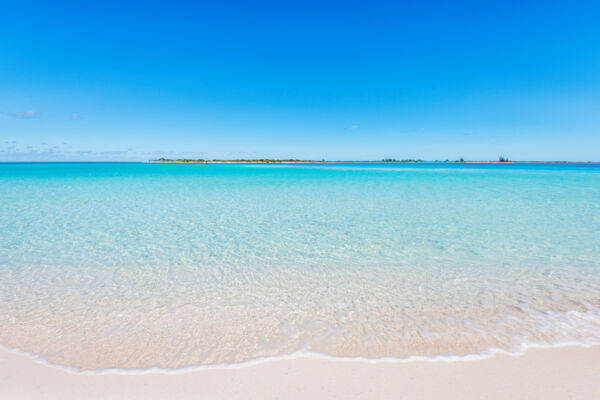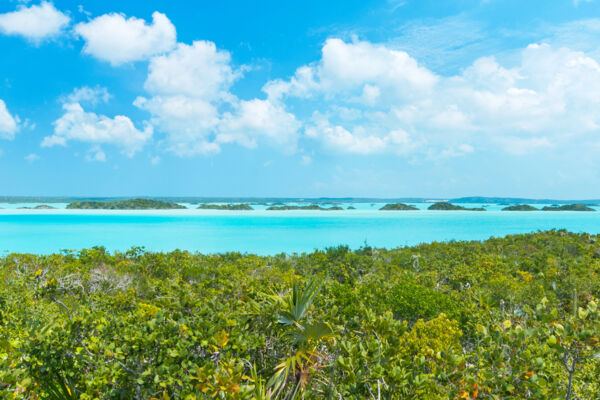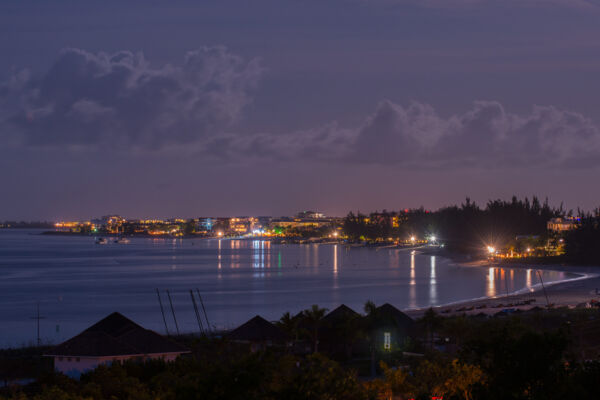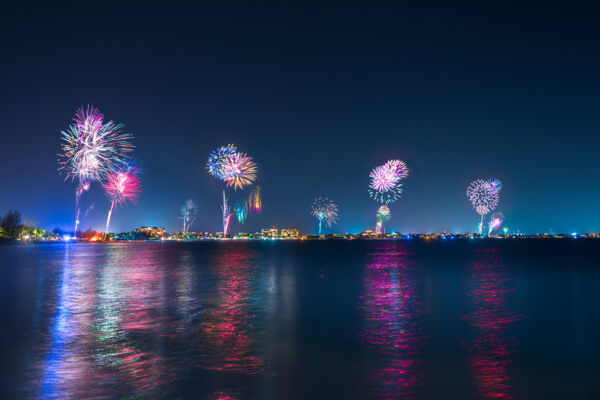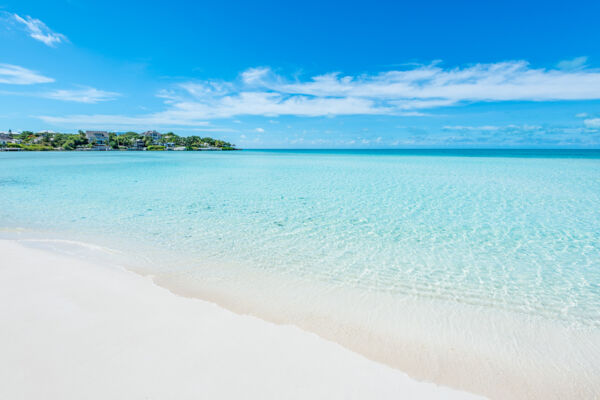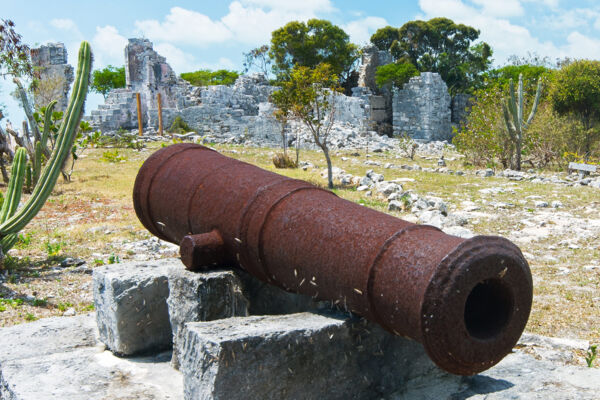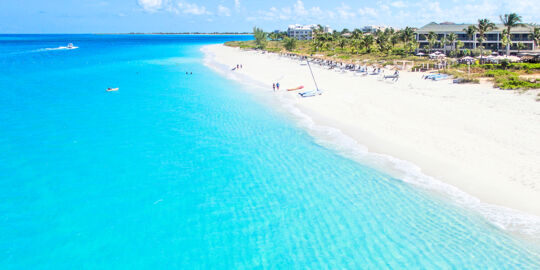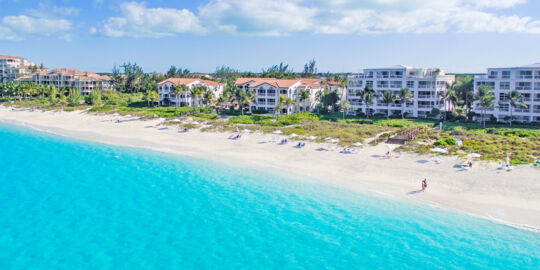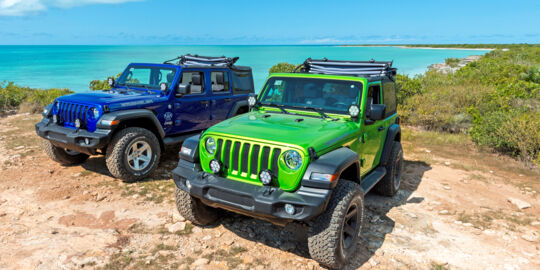History and Overview of Providenciales
Providenciales is the most developed and populated island in the Turks and Caicos, and is home to spectacular beaches, luxury hotels and resorts, expansive vacation villas, and fine dining. All scheduled international flights to the Turks and Caicos land at the Providenciales International Airport (PLS).
Several of the country’s top beaches are found on Providenciales, including the critically acclaimed Grace Bay Beach, and the beautiful Leeward Beach, Bight Beach, Long Bay Beach, Malcolm's Road Beach, Sapodilla Bay, and Taylor Bay.
Providenciales doesn’t have many historical attractions. Cheshire Hall, a Loyalist-era cotton plantation, is the foremost such site.
| Quick Facts | |
| Population | 23,769 (2012 Census) |
| Area | 38 mi² (98 km²) |
| Airport | Providenciales International Airport (PLS) |
| Best Beach | Grace Bay Beach |
| Highest Point | 156 feet (48 m) - Blue Mountain |
Chalk Sound National Park is another unique natural feature of Providenciales. This lagoon paints an amazing picture of hundreds of tiny limestone islands contrasting against brilliant turquoise water.
A Destination for Water Sports
There’s a huge array of water sports and activities offered on Providenciales. Boat charters are a great way to experience our pristine ocean and secluded islands. There’s a great selection of vessels and tours to choose from.
Diving and snorkeling are of course excellent, with over 80 miles (129 km) of barrier reef accessible from Providenciales. Abrupt walls define most sites, where the depths can drop rapidly from 40 feet (12 m) into the thousands.
Exposed to the eastern trade winds, Long Bay Beach is one of the finest kiteboarding spots in the Caribbean and an exceptional place to learn to kite at. The ocean at Long Bay has a sandy bottom and is the perfect depth—sufficiently shallow for standing, yet deep enough for the inevitable crashes!
The sheltered wetlands of Providenciales and the nearby cays are the perfect environment for kayaking and stand-up paddleboarding, where juvenile sharks, starfish, turtles, conch, and stingrays can be seen in their natural habitat.
The Royal Turks and Caicos Golf Club, designed by Karl Litten and rated in the top ten golf courses in the Caribbean, offers a par 72 course among a scenic backdrop of ponds, limestone features, and bird life.
Geography and Terrain
Providenciales is the northwestern-most island in the Turks and Caicos archipelago and the fourth largest by land mass at 38 square miles (98 km²).
Compared to the other islands in the country, Providenciales has the greatest average elevation, with the central Blue Mountain sharing the title of the highest point in the Turks and Caicos with Flamingo Hill on East Caicos at 156 feet (48 m) in height.
The interior of Providenciales consists of the typical tropical dry brushland drought-resistant vegetation common to the Caicos Islands.
History of Providenciales
Previous to the 1980s, Providenciales was a relatively unimportant place. However, an interesting chain of events resulted in a rapid transformation, and a sleepy fishing island become a leading tropical tourism destination.
The Lucayans
Although little evidence exists today, Providenciales likely supported a significant Taino population. Many Taino artifacts found in the Turks and Caicos have been recovered from caves, often when the caves were mined for bat guano in the late 1800s. As might be expected, many of these artifacts found were subsequently lost or sold. Famous Dutch-American anthropologist Theodore de Booy was an initial source of research from the pre-Columbian period.
The Salt Industry
After Grand Turk and Salt Cay saw an increase in sea salt production and export, a trickle of inhabitants, mainly those escaping the hardships of work in the salt salinas and ne’er-do-wells, settled on Providenciales. These early settlers eked out a harsh existence farming, fishing, and salvaging shipwrecks.
The Loyalists
At the end of the 1700s, the Loyalist plantation era began in the Caicos Islands. After the initial success of the North Caicos and Middle Caicos cotton plantations, such as Wade's Green Plantation and Haulover Plantation, Providenciales saw the construction of several agricultural attempts. The best-known example is Cheshire Hall Plantation, yet plantations also stood at locations in Richmond Hills, Long Bay, Wheeland, Northwest Point National Park, and north of Chalk Sound National Park. The field walls of these forgotten sites are gradually being lost to development.
Cotton was the main initial crop raised on the island, yet sisal came to become the primary export later on. As was the case throughout the country, export agriculture largely died out in the mid-1800s due to pests, drought, and hurricane damage.
The post-Loyalist Period
After the plantation days ended, Providenciales saw some dark times and much of the population migrated to either the salt-producing islands, or to the Bahamas. The three small settlements of Blue Hills, Five Cays, and The Bight supported small subsistence fishing and farming communities, but most of the outside income to the island came from the meager ship salvaging operations of Blue Hills, Five Cays, and Birch’s Lookout, near Wheeland.
After the turn of the century, marine exports began to increase, mainly in the form of sea sponges, canned turtle, and dried conch. The Chalk Sound and Five Cays region was the center of these activities.
A little-known fact is that sponge farming took place on Providenciales. Along with operating the cannery, Irishman entrepreneur George Silly oversaw the grafting of sponge pieces onto rock bases in what is now Chalk Sound National Park. The outlook and yields were initially promising, however, as had happened with the cotton plantations, a blight destroyed the industry.
The Dawn of the Tourism Industry
In 1967, Providenciales drastically changed. Provident Limited, a development company headed by Fritz Ludington, recognized the tourism potential of the island’s exceptional beaches and marine environment. An agreement was reached with the Turks and Caicos Government wherein Provident Limited would construct an airstrip (which was called Oxford Airstrip, and was located in Kew Town), roads, a port, and a hotel. By 1970, this infrastructure was largely operational and the Third Turtle Inn and adjacent Turtle Cove Marina became the first hotel on the island.
1984 saw more advances. Club Med Turkoise opened on Grace Bay Beach, the industrial port of South Dock (formerly named Gussy Cove) was converted from a small natural harbor to a port capable of handling shipping containers, and the current and paved Providenciales International Airport was built.
Providenciales has definitely seen up and downs in the recent economy, yet the vast majority of buildings, infrastructure, and bustle is only a couple of decades old.

